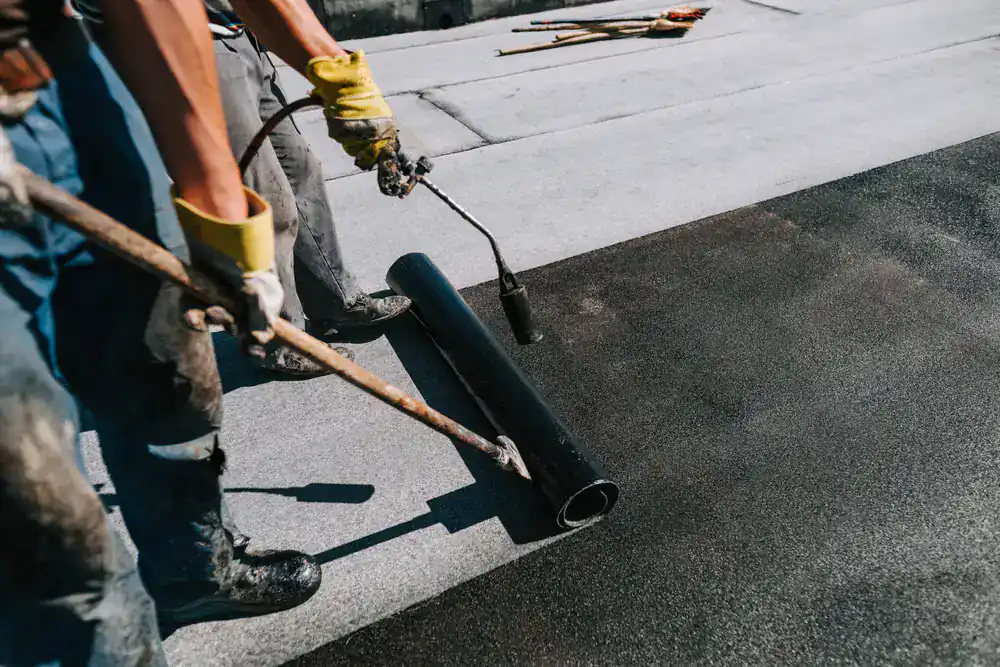
Hear from Our Customers
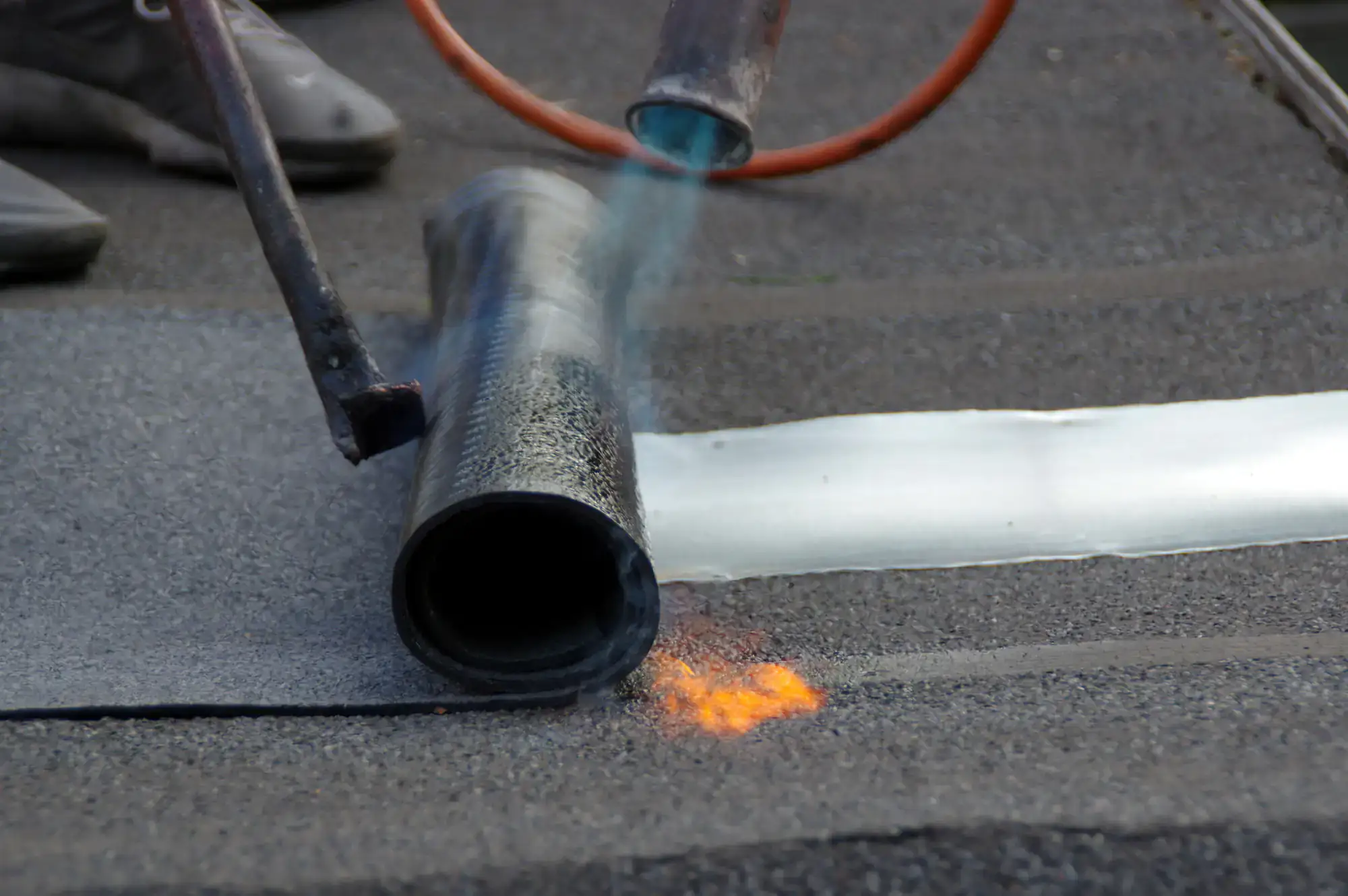
You know that sinking feeling when you spot another water stain on your ceiling. Or when you’re up at night during a storm, wondering if this is the rain that finally finds its way through your flat roof.
Here’s what changes when torch down roofing is installed correctly. No more emergency buckets during storms. No more wondering if your roof can handle another Long Island winter. No more paying for the same repair three times because the first two contractors didn’t understand flat roof dynamics.
The modified bitumen membrane creates a seamless barrier that actually keeps water out. The torch application process fuses every seam into one continuous waterproof layer. When severe weather hits Westhampton, your roof becomes the one thing you don’t have to worry about.
We’ve spent over two decades becoming Long Island’s go-to flat roofing specialist. We’ve seen every type of flat roof failure, from improperly installed membranes to shortcuts that cost homeowners thousands in water damage.
Our team understands something many contractors miss: torch down roofing isn’t just about applying heat to material. It’s about understanding substrate preparation, proper overlap techniques, and the precise temperature control that creates watertight seams.
Westhampton’s coastal environment and seasonal weather patterns demand expertise. Between the salt air, temperature swings, and the unique challenges of maintaining vacation properties, your roof needs contractors who understand local conditions. We’ve been protecting homes in this area long enough to know exactly what works and what fails.
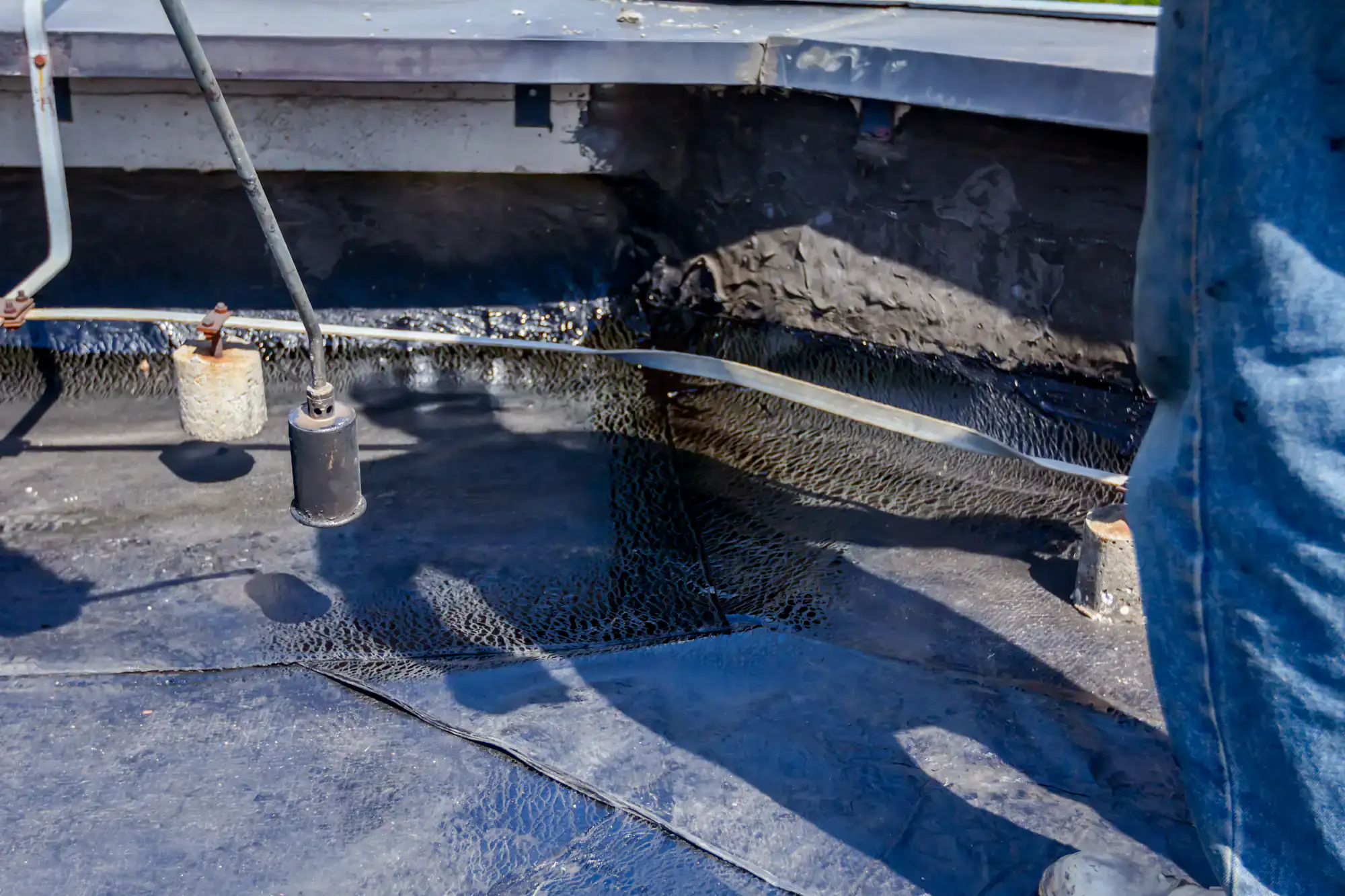
We start with a complete substrate inspection because torch down roofing is only as good as what’s underneath it. Any soft spots, moisture issues, or structural problems get addressed before we touch the membrane material.
The base preparation includes proper insulation placement and overlay board installation. This step prevents the ponding water issues that plague many flat roofs. Getting the slope right matters more than most contractors realize.
Then comes the actual torch down application. We roll out the modified bitumen membrane and use precisely controlled propane torches to heat the material. The APP polymer in the membrane melts and fuses, creating those critical watertight seams. Each overlap gets the attention it needs – no rushing, no shortcuts.
The cap sheet application completes the system. This top layer provides UV protection and the final waterproof barrier. When we’re finished, you have a seamless membrane that’s designed to expand and contract with temperature changes without cracking or separating.
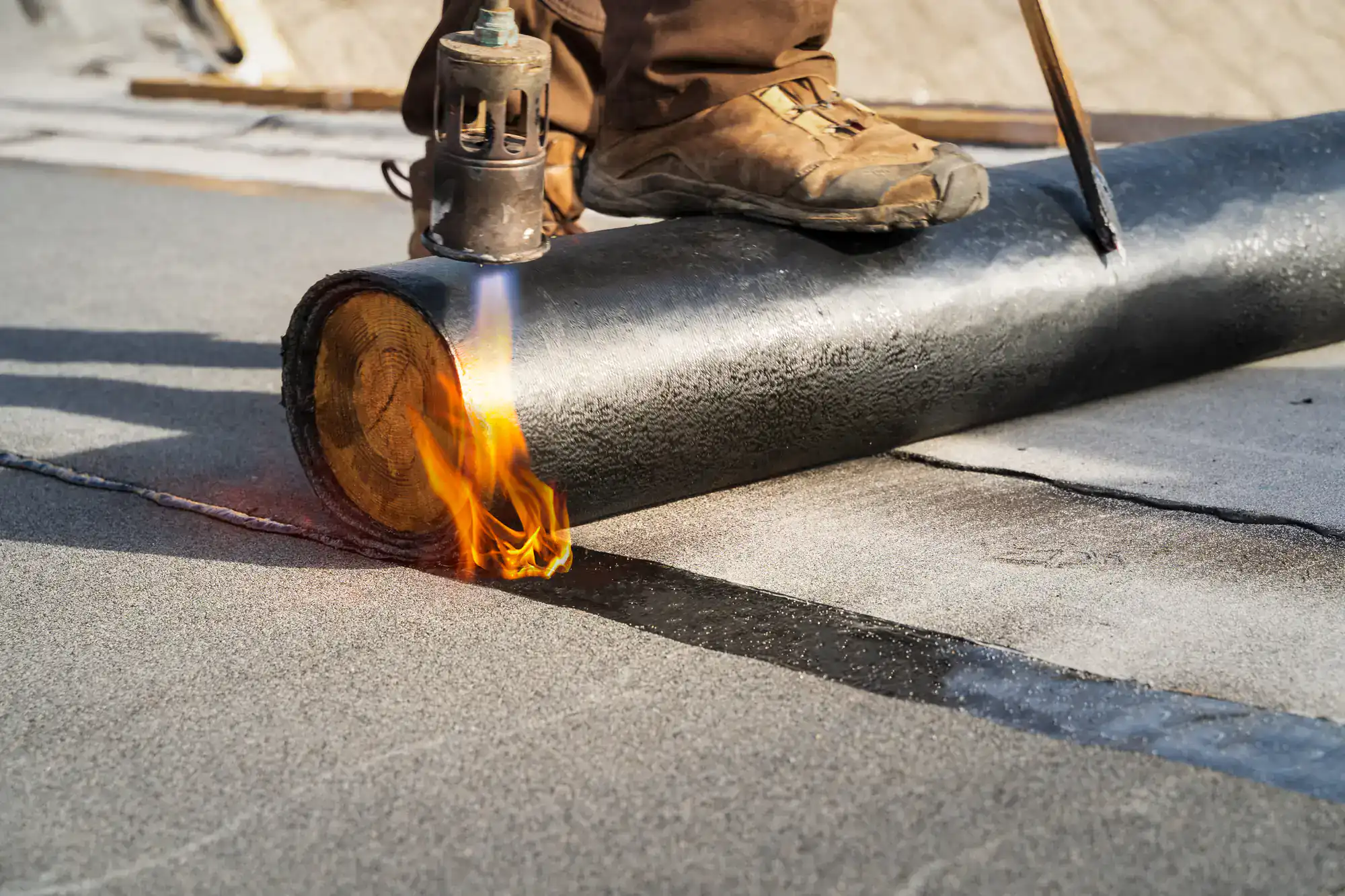
Ready to get started?
Modified bitumen torch down roofing delivers 20+ year performance when installed correctly. The APP polymer modification gives the membrane flexibility that handles Long Island’s temperature swings without the cracking problems you see with traditional built-up roofing.
Your system includes multiple layers of protection. The base sheet anchors everything to your roof deck. The intermediate layers provide redundancy – if one layer develops an issue, the others maintain the waterproof barrier. The granulated cap sheet handles UV exposure and provides the walking surface for maintenance access.
Westhampton’s coastal location means your roof faces salt air, wind-driven rain, and temperature cycles that stress roofing materials. Torch down systems handle these conditions better than single-ply membranes or traditional asphalt applications. The heat-fused seams don’t rely on adhesives that can fail over time.
The installation includes proper flashing details around any roof penetrations, edge terminations that prevent wind uplift, and drainage considerations specific to your roof’s layout. These details separate professional installations from the problems we’re often called to fix.
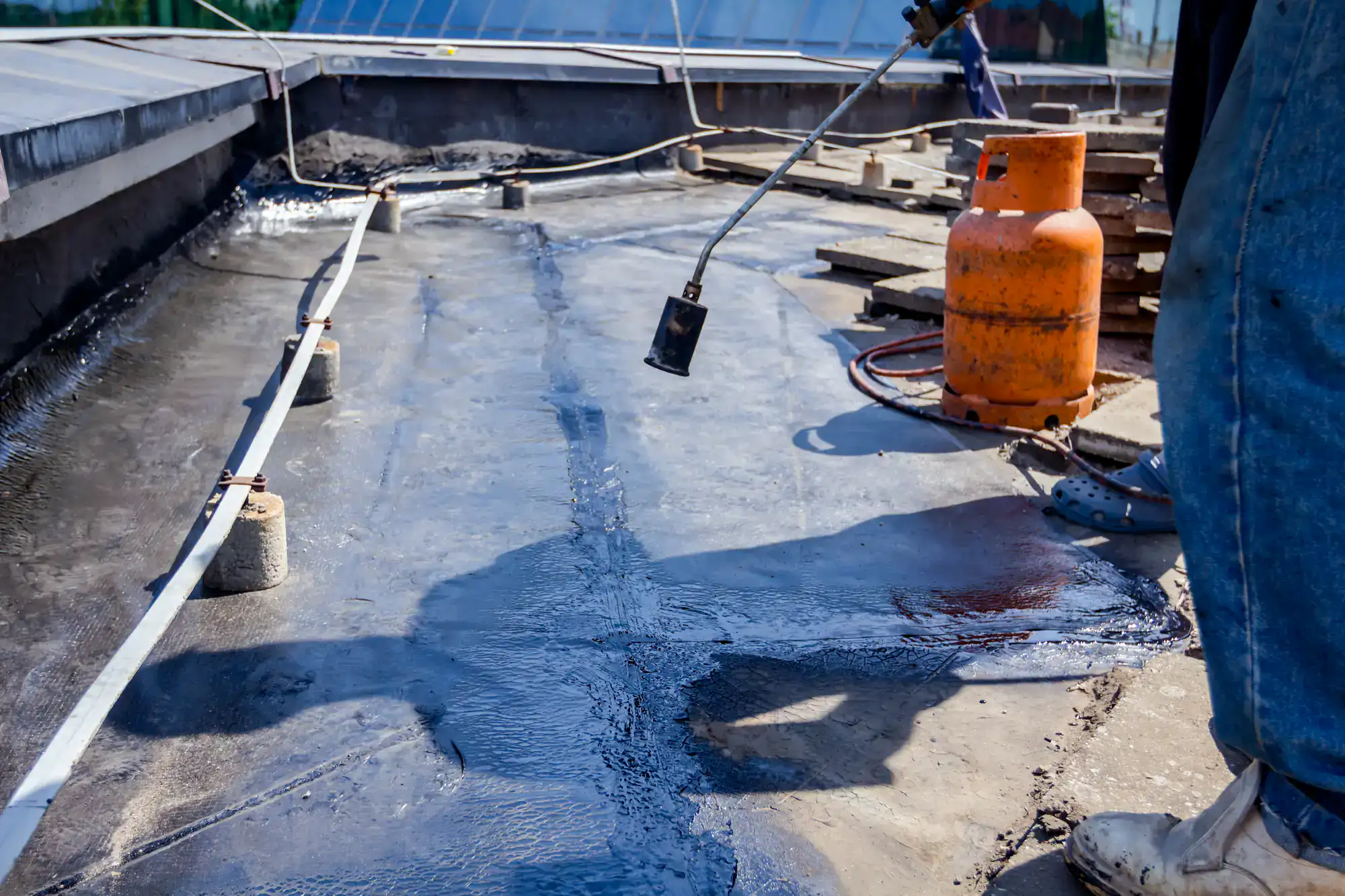
Properly installed torch down roofing typically lasts 20-25 years in Long Island’s climate. The key factors affecting lifespan include substrate preparation, installation quality, and maintenance.
The APP modified bitumen membrane is designed to handle our temperature extremes and coastal conditions. Unlike some roofing materials that become brittle in cold weather or soft in summer heat, the polymer modification keeps the membrane flexible year-round.
Regular inspections every few years help identify minor issues before they become major problems. Most torch down roofs we maintain reach or exceed their expected lifespan when properly cared for.
Torch down roofing uses heat to fuse seams, creating a monolithic waterproof membrane. This differs from EPDM rubber roofing that relies on adhesive seams, or TPO that uses welded seams.
The heat fusion process eliminates the adhesive failure points that cause problems in other systems. When properly torched, the seams become stronger than the membrane itself. This makes torch down particularly reliable for roofs that experience thermal movement.
Modified bitumen also handles puncture resistance better than single-ply membranes. The multi-layer construction and reinforcement materials provide durability that matters when you’re dealing with foot traffic, HVAC equipment, or debris from storms.
In many cases, yes, but it depends on the condition of your existing roof structure. We need to evaluate the substrate, insulation, and overall structural integrity before making that determination.
If your existing roof has moisture problems, soft spots, or structural issues, those must be addressed first. Installing new roofing over compromised substrate just creates future problems. However, if the existing roof is structurally sound and properly dried, overlay installation can be more cost-effective than complete tear-off.
The decision involves building code requirements, weight considerations, and long-term performance factors. We’ll provide a thorough assessment and explain your options clearly during the inspection process.
Torch down roofing costs vary based on roof size, complexity, substrate conditions, and whether it’s new installation or replacement. Generally, expect to invest more upfront than basic single-ply systems, but less than premium options like slate or tile.
The value comes from longevity and reliability. When you factor in the 20+ year lifespan and minimal maintenance requirements, the cost per year of protection often beats cheaper alternatives that need frequent repairs or early replacement.
We provide detailed written estimates that break down material costs, labor, and any substrate preparation needed. No surprises, no hidden fees, and no pressure tactics. You’ll know exactly what you’re investing in and why.
When performed by trained professionals with proper equipment and safety protocols, torch down installation is completely safe. The key is having experienced contractors who understand fire safety, proper ventilation, and emergency procedures.
We use commercial-grade propane torches designed specifically for roofing applications. Our crews are trained in safe handling procedures and carry appropriate fire safety equipment. We also coordinate with local fire departments when required and maintain comprehensive insurance coverage.
DIY torch down installation is not recommended due to the fire hazards and technical expertise required. The precision needed for proper membrane fusion and seam quality requires professional training and experience.
Torch down roofing requires minimal maintenance compared to other flat roofing systems. Annual inspections help identify minor issues before they become major problems, and periodic cleaning keeps drains clear.
Look for signs like surface cracking, seam separation, or membrane blistering during your visual checks. Most issues we see develop gradually and are easily addressed when caught early. Prompt attention to small problems prevents expensive repairs later.
We recommend professional inspections every 3-5 years to assess overall system condition and identify any maintenance needs. This proactive approach helps maximize your roof’s lifespan and maintains warranty coverage.
Other Services we provide in Westhampton